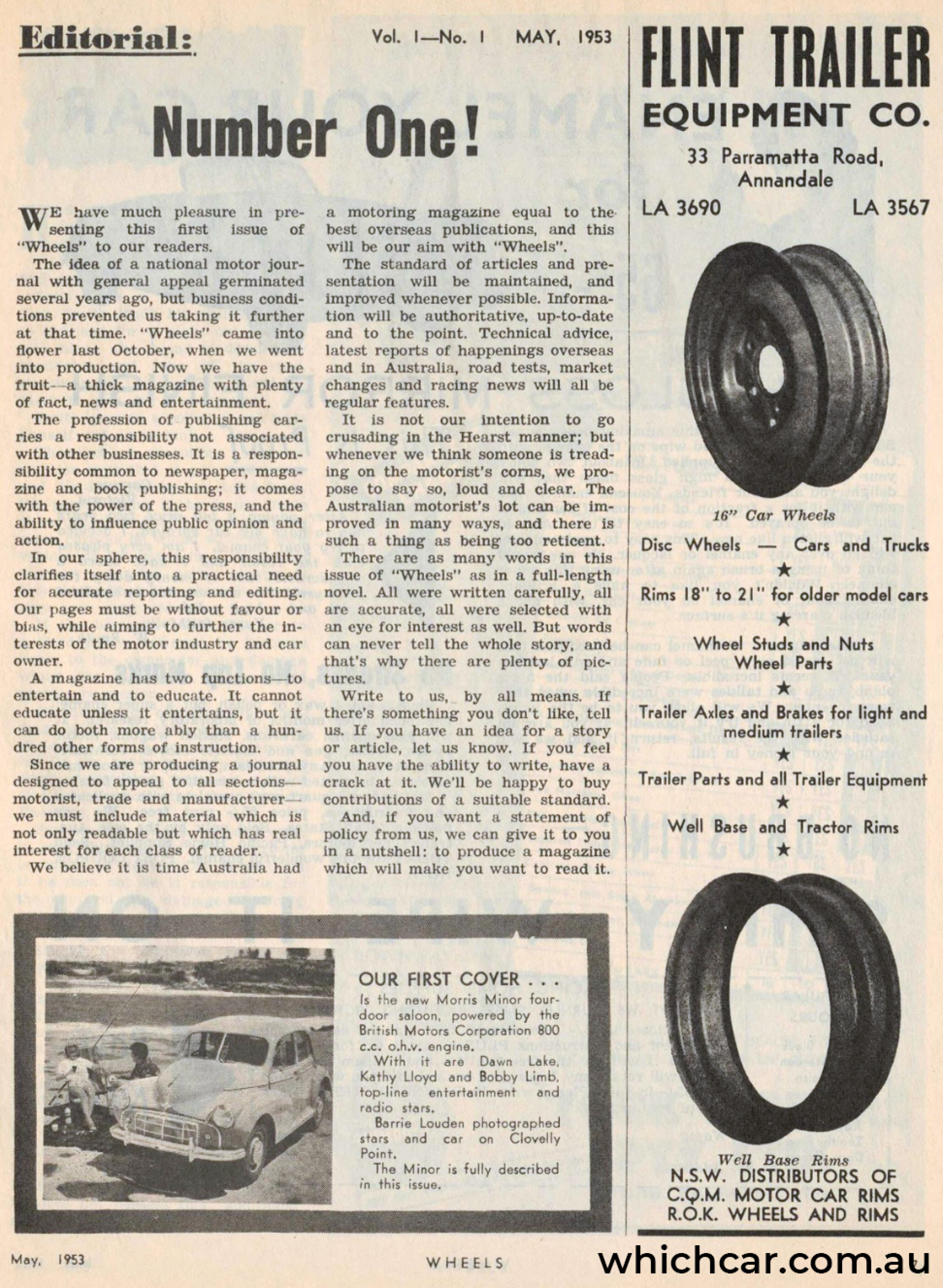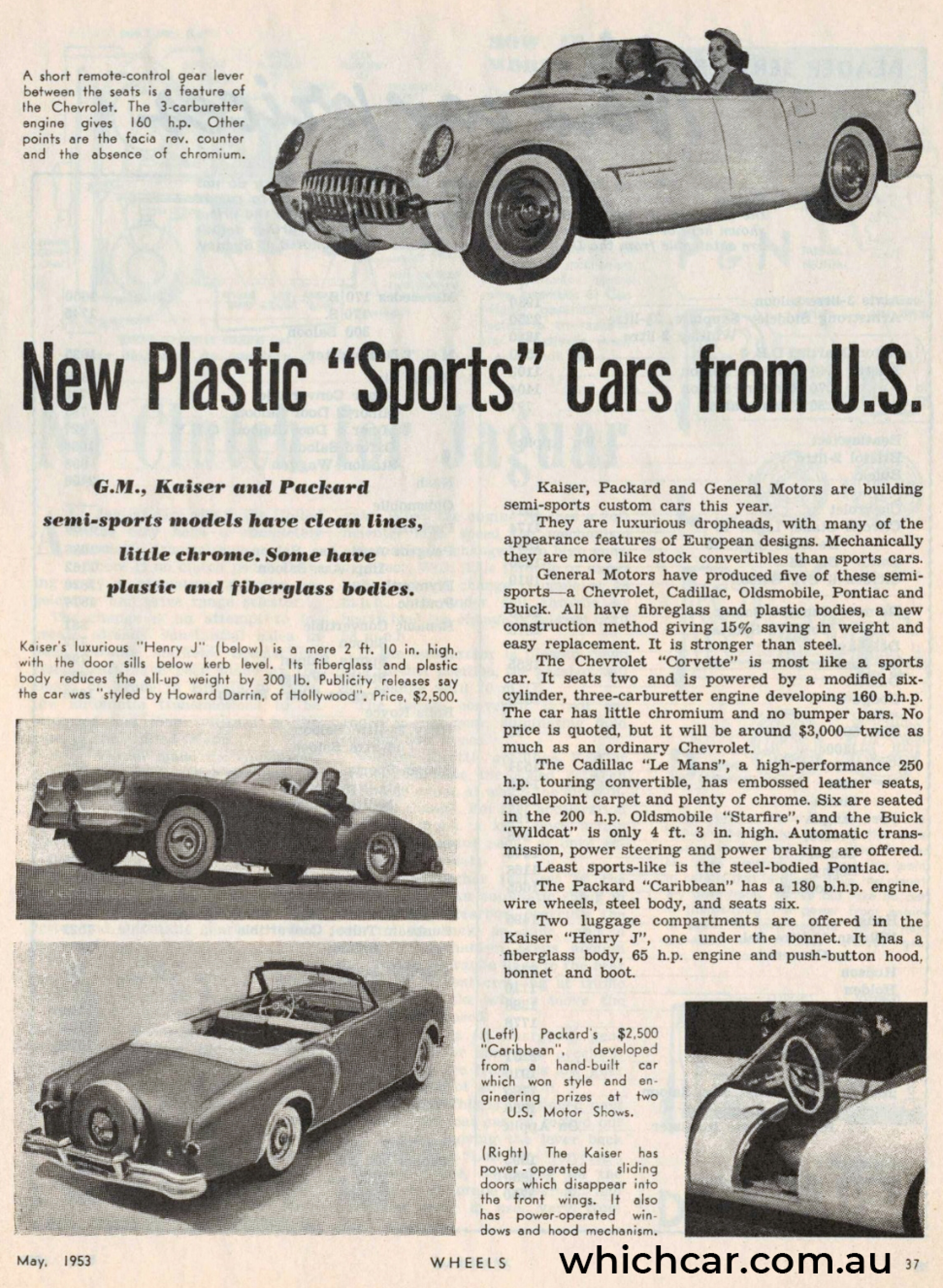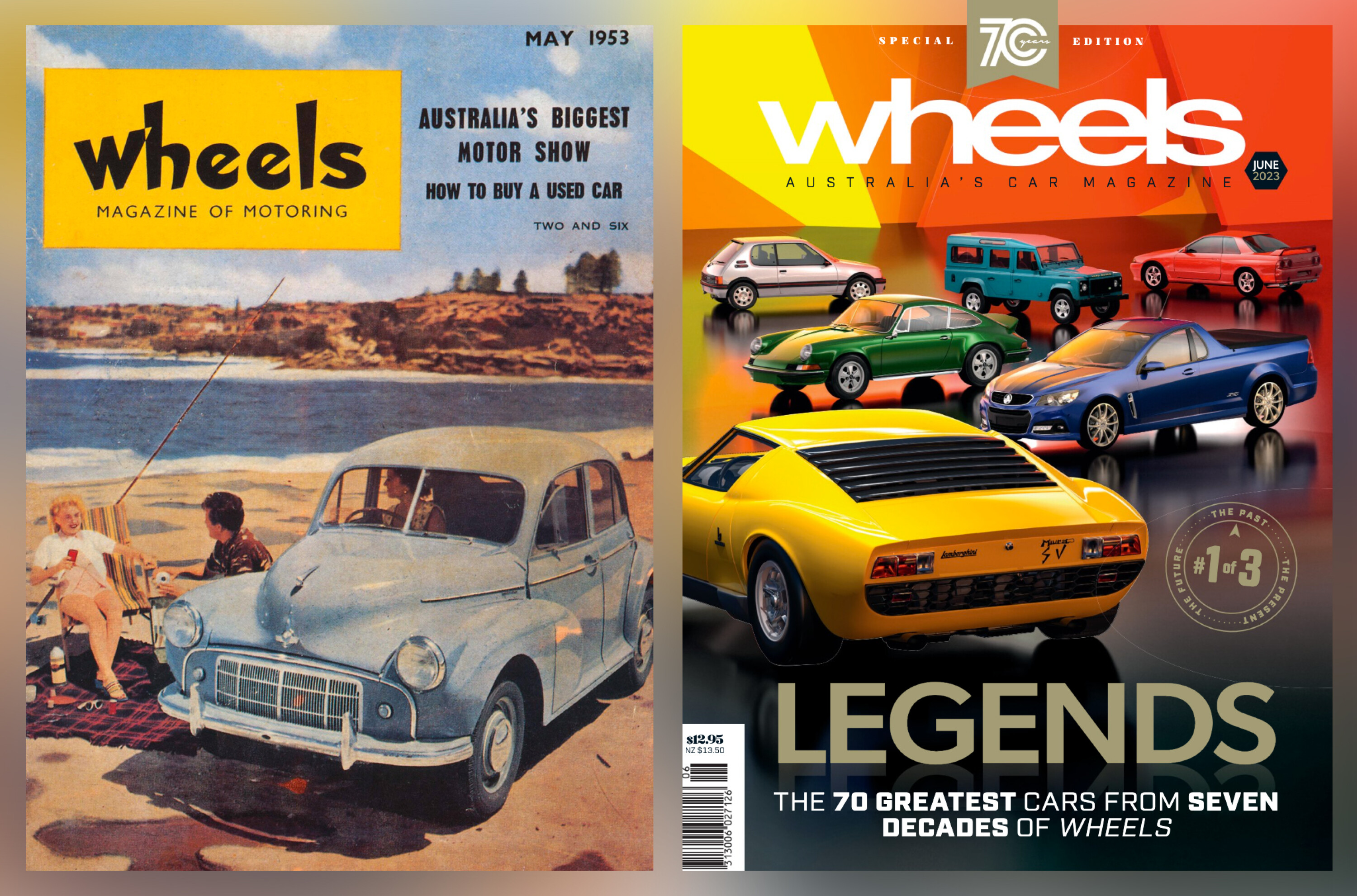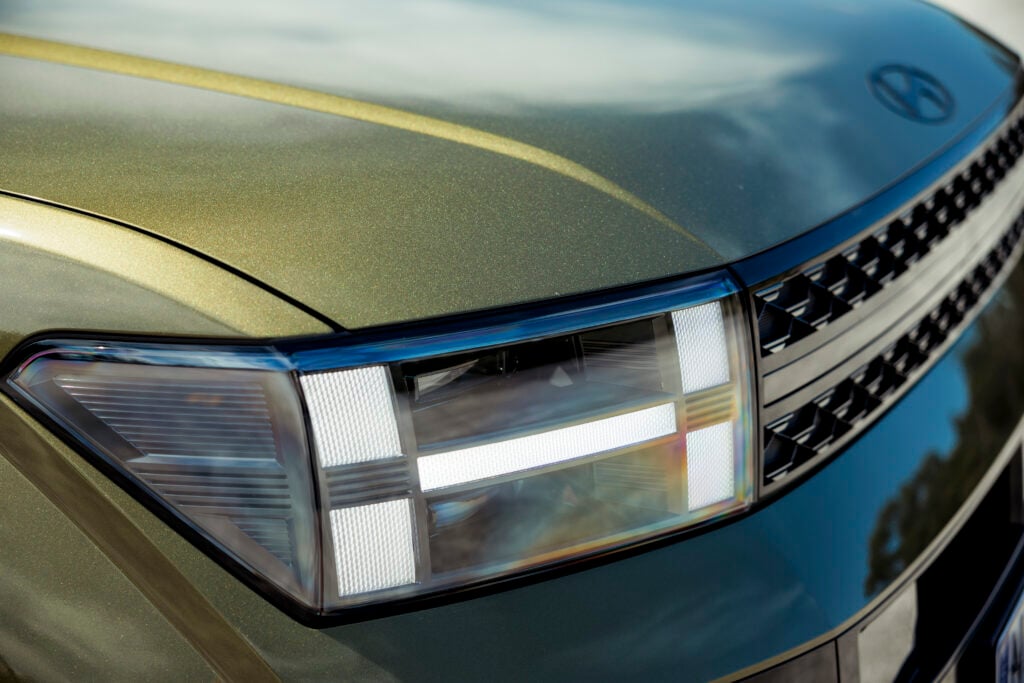Open the 171st volume of Nature Journal, issue 4356, turn to page 737, and you’ll find an article called ‘Molecular Structure of Nucleic Acids: A Structure for Deoxyribose Nucleic Acid’.
It’s not very long, just 870 words minus attributions and cited references (you can see it here [↗]), yet within those paragraphs Francis Crick and James Watson tell us how life works. It’s their discovery of the double helix structure of DNA.
I write this in awe of their great leap of understanding, but also slightly dazed at the fact that Wheels magazine has been in existence longer than our understanding of the basic building blocks of life. When Athol Yeomans sent the first issue of Wheels to press in 1953, the magazine acidly reported on New Plastic ‘Sports’ Cars from U.S., including some contraption called the Chevrolet Corvette.
Top of story: The first issue of Wheels, and the first in our 70 Years trilogy. Click the image to see both covers in full.

The news section carried plans for a Redex trial across Australia and a new race track on Phillip Island, there were ads for Lucas batteries spruiking ‘utmost dependability’. Elsewhere, Major G.D. Mitchell gave caravanning advice.
“There is no need for more than a .22 if you are prepared to shoot only for the pot and don’t intend going for pigs, buffalo, scrub bulls or crocodiles,” he counselled. It’s fair to say we’ve come a very long way.
Had they required a break from the dry business of X-ray diffraction techniques, Crick and Watson could have browsed articles on how inadequate the Hume Highway between Melbourne and Sydney was, a primer on the basic principles of disc brakes or how to remove broken screws and taps, all of which stand up pretty well some 70 years later.

While they were peering under the bonnet of life, we were doing likewise with the new Morris Minor (lubrication by vane pump).
Sterling stuff, and to celebrate seven decades in print, we’re creating three special editions, themed on past, present and future. In this issue, we’ll set about naming the greatest cars of all time across seven key segments. Next month we’ll round up the cars that matter most today – those that are the very best of the current crop.
For the August issue we get the crystal balls out and plot a trendline towards the cars you’ll be driving in the next five to ten years.
As tongue-in-cheek as it may be to contrast our collection of automotive musings with one of the greatest scientific discoveries of all time, both curiously arrive at a similar point. Never before have we been doused in such a firehose of data. Indeed, without the means to convert it into relevant information it loses its meaning.

Contemporary science knows we have a tangle of 3.1 billion genetic base pairs within us, but only has a rudimentary grasp of how to apply that data.
Likewise, it’s never been more important to find a trusted voice in a saturated media landscape where any opinion claims validity if it attracts enough attention.
One thing that has never changed across seven decades is Wheels’ commitment to building that bond of trust with you, the reader, to filter the noise and deliver information you can rely upon, even if it was on what ammo is best for dispatching an ornery pig.
So while we can’t tell you how genes function, we know the building blocks of a great car back to front and inside out. Enjoy the issue.
We recommend
-
 Opinion
OpinionENRIGHT: Feet under the editor's desk at Wheels magazine
"Wheels ought to bring you words and pictures the quality of which you won’t find anywhere else. If the magazine’s not doing that, I’ll have failed you."
-
 Opinion
OpinionThe true story behind Wheels’ most controversial magazine cover
I sent Edsel Ford a framed copy, and for years it hung on the inside door of a toilet in his home
-
 Features
FeaturesOpinion: Audiobooks can’t replace a stack of car magazines
In a world populated by the mentally shiftless and imagination-deprived, it probably had to happen






